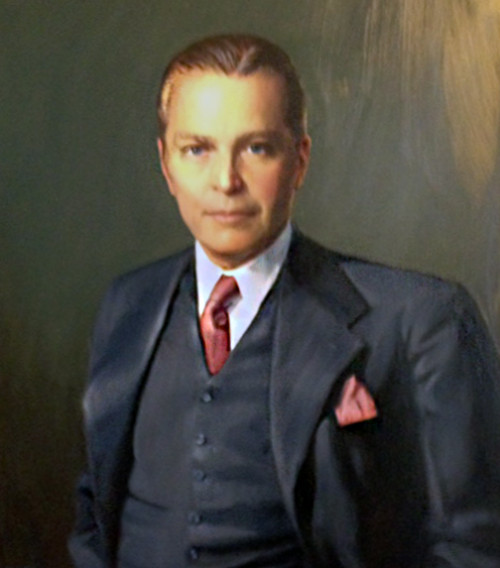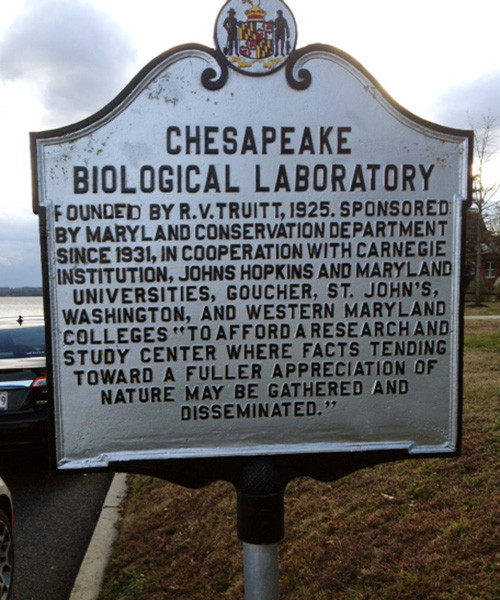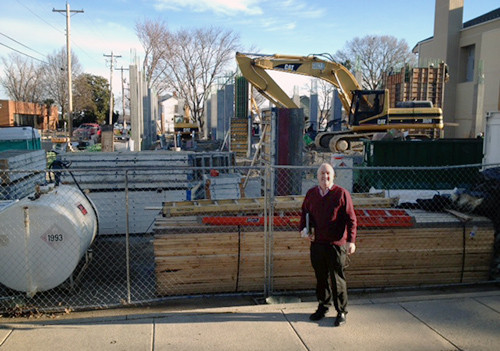Reginald Truitt: The origin of Chesapeake Bay science in support of management
Bill Dennison ·Celebrating 90 years of UMCES series
This year is the ninetieth celebration of the formation of the University of Maryland Center for Environmental Science (UMCES) in 1925. The origin of UMCES can be traced back to an amazing Marylander, Reginald Truitt, who founded the Chesapeake Biological Laboratory. Michael Fincham recently wrote a nice piece about Truitt in Maryland Sea Grant's publication Chesapeake Quarterly, stimulating me to ask Kathy Heil, the UMCES librarian, to help me learn more about this interesting man.

Reginald Truitt turns out to be a fascinating man. A few interesting facts about Truitt that I found amazing include the following:
- Son of a Chincoteague Bay waterman in Snow Hill, Maryland.
- World War I airplane pilot.
- Nickname was "Rags", referring to his ragtime music dancing abilities.
- Married for sixty years to the daughter (Mary Harrington) of a Maryland Governor.
- Wore white linen suits, even into the field.
- Inducted into the National Lacrosse Hall of Fame.
- Had to leave the Maryland State Capitol building due to a mob of angry watermen.
- Was Founder and Director of the Chesapeake Biological Laboratory.
- Wrote a series of books following his retirement.
- Lived to be 100 years old.
Reginald Van Trump Truitt was born in 1891 in Snow Hill, Maryland. He grew up in and around the waters of Chincoteague Bay and spent much of his research career studying oysters in order to help watermen. He was bright, outspoken and handsome. He received his B.S. Degree from the University of Maryland College Park in 1914, then he was a High School Principal at Sudlersville High School for five years. Reggie joined the U.S. Army in World War I and served as a Second Lieutenant and airplane pilot. Following his wartime service, he did his M.S. degree (1924), again at College Park and then went to American University for his Ph.D. (1929). Truitt was a gifted lacrosse player for the University of Maryland, even playing against Jim Thorpe who many consider the greatest American athlete of all time. Truitt became the University of Maryland lacrosse coach and his team won the national championship in 1924-1925.

Reginald Truitt's passion was marine science in support of conservation and he dedicated his career to that topic. He began traveling to Solomons Island in Southern Maryland to conduct research on oysters, crabs and fish of Chesapeake Bay. He originally used an old Solomons Island oyster house to conduct his studies, moved into more spacious accommodation in the downstairs of a 'moving picture house'. Truitt was able to convince the state of Maryland to support the creation of the Chesapeake Biological Laboratory in 1925. After several years, he obtained funding for the construction of a permanent building, now Beaven Hall where the current CBL administrative offices, library and researcher offices are located. Truitt served as the CBL Director for thirty years until his retirement, building this first state marine laboratory into a world class facility. Truitt retired to an active life based at 'Great Neck Manor' on Kent Island. He wrote a series of books and maintained an active role in conservation issues in Maryland including championing the creation of Assateague Island National Seashore.

Over the course of his century of life, Truitt accumulated a staggering number of awards and honors for a wide variety of accomplishments including the following: National Lacrosse Hall of Fame, Commodore of the Solomons Island Yacht Club, President of University of Maryland Alumni Association, President of the National Shellfishes Association, President of Sigma Xi at the University of Maryland, Distinguished Citizenship of Maryland Award, Outstanding Conservationist of the Year Award, and Trustee Boy Scouts of America. This abbreviated list provides an insight into his wide ranging interests and his leadership displayed in all facets of his life.
On a recent visit to the Chesapeake Biological Laboratory, I watched construction workers pouring concrete pillars as part of the new R.V. Truitt Laboratory, replacing a building that had succumbed to concrete cancer, exacerbated by flowing seawater systems. It was nice to see that this namesake structure would continue the legacy of Reginald Truitt. I was able to photograph of the current Director of the Chesapeake Biological Laboratory, Tom Miller, in front of this construction site, honoring the past, present and future of this vibrant marine science laboratory.

In addition to the Truitt building, UMCES bestows its most prestigious award, the Reginald V. Truitt Environmental Award, to people who have made significant contributions to the better management of Chesapeake Bay. The most recent awardee was Governor Martin O'Malley and previous awardees have been Maryland State Senator Bernie Fowler, U.S. Senator Charles "Mac" Mathias, Governor Parris Glendening and U.S. Senator Paul Sarbanes.
In reading about Reginald Truitt and his passion for science in support of effective management of natural resources, I am struck at how this vision is still what drives the UMCES scientists today, just as it has for the past ninety years.
About the author
Bill Dennison

Dr. Bill Dennison is a Professor of Marine Science and Interim President at the University of Maryland Center for Environmental Science (UMCES).
Next Post > Talking about moose and climate change in snowy Massachusetts
Comments
-
Atika 8 months ago
Thank you for sharing this great information with us, i really appreciate your post!